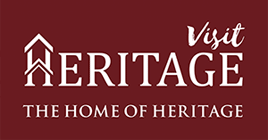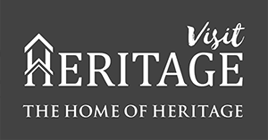To build your own Itinerary, click  to add an item to your Itinerary basket.
to add an item to your Itinerary basket.
Already saved an Itinerary?



You are here: UK History > The Middle Ages > Economy and society in the Middle Ages
During the Middle Ages, England’s economy relied mostly on agriculture, particularly the growing of crops and rearing of animals. Agricultural land was typically organised around manor houses and would be owned and managed by a Lord or Baron who resided in the manor. The fields were maintained by local peasants, who worked long hours for little reward. They would pay rent to the landowner either by working the land or with cash.
By the 11th century, a market economy had begun to flourish across England, with the south east of the country relying on mostly international trade from the continent. There was an influx of industry at this time, with around 6000 watermills built around England.
Following the Norman invasion, there was a growth in the economy, driven in part by an increase in the population and the reclassification of land to create areas protected by Royal law and farming. Towns and villages grew during this time too, which supported the creation of fairs and markets, Jewish financiers also played a role in helping the economy increase.
Around this time mining also increased, with a silver boom in the 12th century which fuelled a more consistent creation of currency. The English cloth industry also grew considerably at this time, especially in the South West, by the end of the Middle Ages, the economy, which had been devastated by the War of the Roses, was beginning to recover and shipbuilding and metalworking started to grow in popularity.
Thanks to the Greek and Islamic influences that came to England around the 12th century, huge strides were made in terms of science and technology. Units for measuring time, the building of clocks and clockwork mechanisms became more widely used which allowed for the building of mills and the universities of Oxford and Cambridge were established.
Water power was used particularly during this time to create not only mills but also to power hammers and to assist in smelting. New mining methods were also introduced using this new found technology, as well as new techniques for brewing beer, preserving food and creating pottery and stoneware, which went on to replace wooden bowls and plates by the 15th century. The printing press was established during this time and bridges were either rebuilt in stone to maintain trade links or new ones entirely.
The Middle Ages produced a variety of art, including embroidered cloths, crosses, stone sculptures and more using a range of materials, including gold, glass and ivory which was imported from the continent.
The Norman conquest introduced more French artistic styles and things like the Bayeux Tapestry became much more popular. Stained glass became a particularly popular form of English art during this period, little of the stained glass from this period has survived but the style is still used in churches across the UK.
The Middle Ages produced extensive poetry, mostly in Old English. The best known of these poems is probably Beowulf, which is typical of this period and portrayed a heroic tale involving dragons and Christian influences. Romantic poems were also popular during this time, as were stories of King Arthur.
During the reign of Richard II, there was an upsurge in the use of Middle English in these poems and the work of Geoffrey Chaucer became popular, including his Canterbury Tales.
In terms of music, ballads were the most popular and more instruments were introduced including guitars, harps and organs. Henry IV sponsored an extensive range of music in England and his son, Henry V, brought back French musical influences after Agincourt.
© Visit Heritage 2025. All Rights Reserved

.png)


